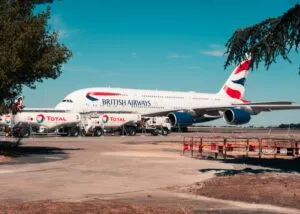British Airways Flight Delays: Behind The Scenes And Industry Insights

When passengers experience flight delays, the immediate response is often one of frustration and inconvenience. However, behind each delay lies a complex web of factors and decisions, many of which remain unseen to the average traveler. This article delves deep into the intricate world of flight delay causes, offering a behind-the-scenes look at the challenges British Airways faces and providing industry insights that shed light on the broader context of air travel disruptions.
Behind the Curtain: Delving into the Flight Delay Causes
Flight delays are an unfortunate reality in the world of air travel, and while passengers often see only the end result, a myriad of factors contribute to these disruptions, including:
- Weather conditions: Adverse weather, be it thunderstorms, heavy fog, or snow, can make flying unsafe. Airports may limit their operations or close entirely during severe conditions.
- Technical issues: Aircraft are intricate machines. Unexpected mechanical problems can arise that require immediate attention, ensuring passengers’ safety.
- Air Traffic Control (ATC) Restrictions: Airspace congestion or issues at destination airports can lead to ATC-imposed delays.
- Crew availability: Strict regulations govern how long flight crews can work to ensure they’re well-rested. Delays can sometimes occur if there’s a wait for a fresh crew.
- Security concerns: Any security threats or issues can lead to immediate flight delays or cancellations.
- Operational challenges: This can range from baggage loading delays to waiting for connecting passengers.
The Economics of Flight Delays
The economic implications of flight delays ripple through the aviation industry, affecting airlines, airports, passengers, and even the broader economy.
For airlines like British Airways, a delay can lead to immediate financial costs. These include British Airways flight delay compensation to passengers, additional operational expenses such as crew overtime, increased fuel consumption if planes need to circle before landing, and potential knock-on delays for aircraft scheduled to fly subsequent routes. Moreover, there’s the cost of providing accommodations, meals, and alternative transport for stranded passengers.
Beyond the immediate financial outlay, there are long-term economic consequences of British Airways delays. Repeated delays can tarnish an airline’s reputation, leading to a potential drop in bookings and loyalty program memberships. For major hubs and airports, consistent delays can deter airlines from using their facilities, impacting their revenue streams.
Collaborative Efforts: Airline-Industry Partnerships
British Airways, like other major carriers, is deeply intertwined with a network of industry partners, each playing a crucial role in the seamless operation of flights.
For instance, in collaboration with airport authorities, streamlined processes can be established to expedite the turnaround time for aircraft, ensuring quicker departures after arrivals. Air traffic control partnerships are vital in managing congested airspace, especially during peak times, to prevent cascading delays.
Ground service providers, from refueling to baggage handling, play a pivotal role in ensuring timely departures. Additionally, inter-airline collaborations can be beneficial, especially when rerouting passengers during significant disruptions.
Innovations in Flight Delay Mitigation
British Airways, a global leader in the industry, has been at the forefront of this innovation. They’ve integrated predictive analytics into their operations, using historical and real-time data to forecast potential delays. This data-driven approach, analyzing everything from weather patterns to airport congestion, allows the airline to make proactive adjustments, such as suggesting optimal departure times or alternative routes.
Another significant stride is the use of digital twin technology, creating a virtual replica of the airline’s entire operation. This digital environment simulates various scenarios, pinpointing potential inefficiencies and enabling preemptive measures. Coupled with the rise of smart airports equipped with IoT devices, which monitor real-time airport operations, British Airways is pioneering efforts to reduce flight disruptions and enhance the passenger experience.
Global Comparison: British Airways and Other Airlines
British Airways, the UK’s largest airline, is renowned for its revamped seating comfort and extensive global reach, though additional fees can sometimes accumulate. Emirates, on the other hand, stands out as the fourth largest international airline, offering luxury experiences, especially with its iconic A380’s first-class.
Air France, representing France’s primary airline, is part of the SkyTeam alliance and surprises many with its diverse and quality in-flight meals. Lufthansa, one of Europe’s leading airlines, is celebrated for its punctuality and direct connections to numerous international destinations, including 20 major U.S. cities. Each of these airlines presents travelers with distinct advantages, ensuring a variety of choices based on individual preferences and travel requirements.
In conclusion
Understanding the nuances behind British Airways delays offers a unique lens into the broader challenges and triumphs of the industry. As we’ve explored, every airline has its own set of strengths and areas for improvement. Yet, it’s the collective commitment to passenger safety, comfort, and satisfaction that remains paramount. As travelers, being informed about these intricacies not only enhances our journey but also fosters a deeper appreciation for the efforts that go into every flight.